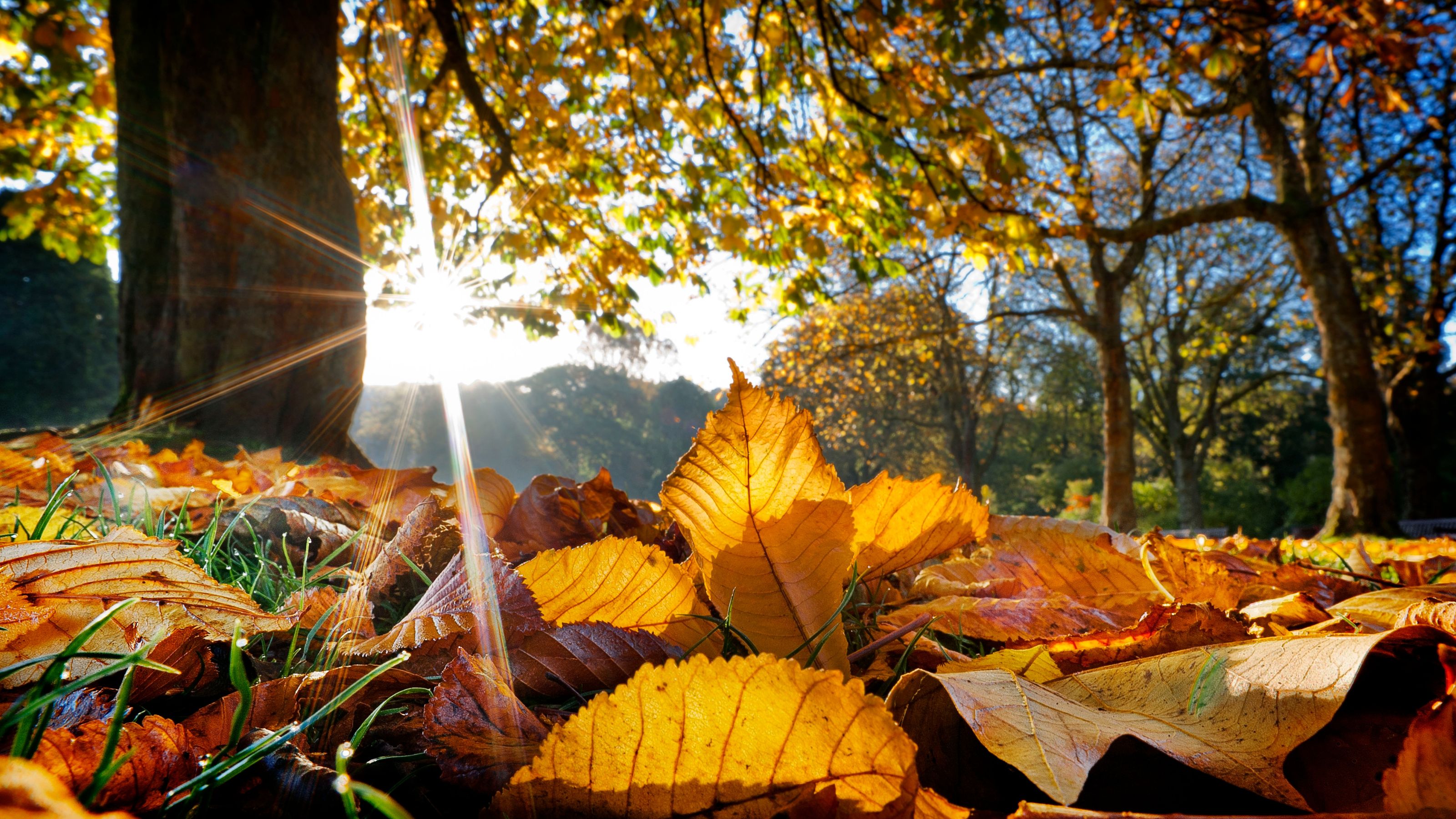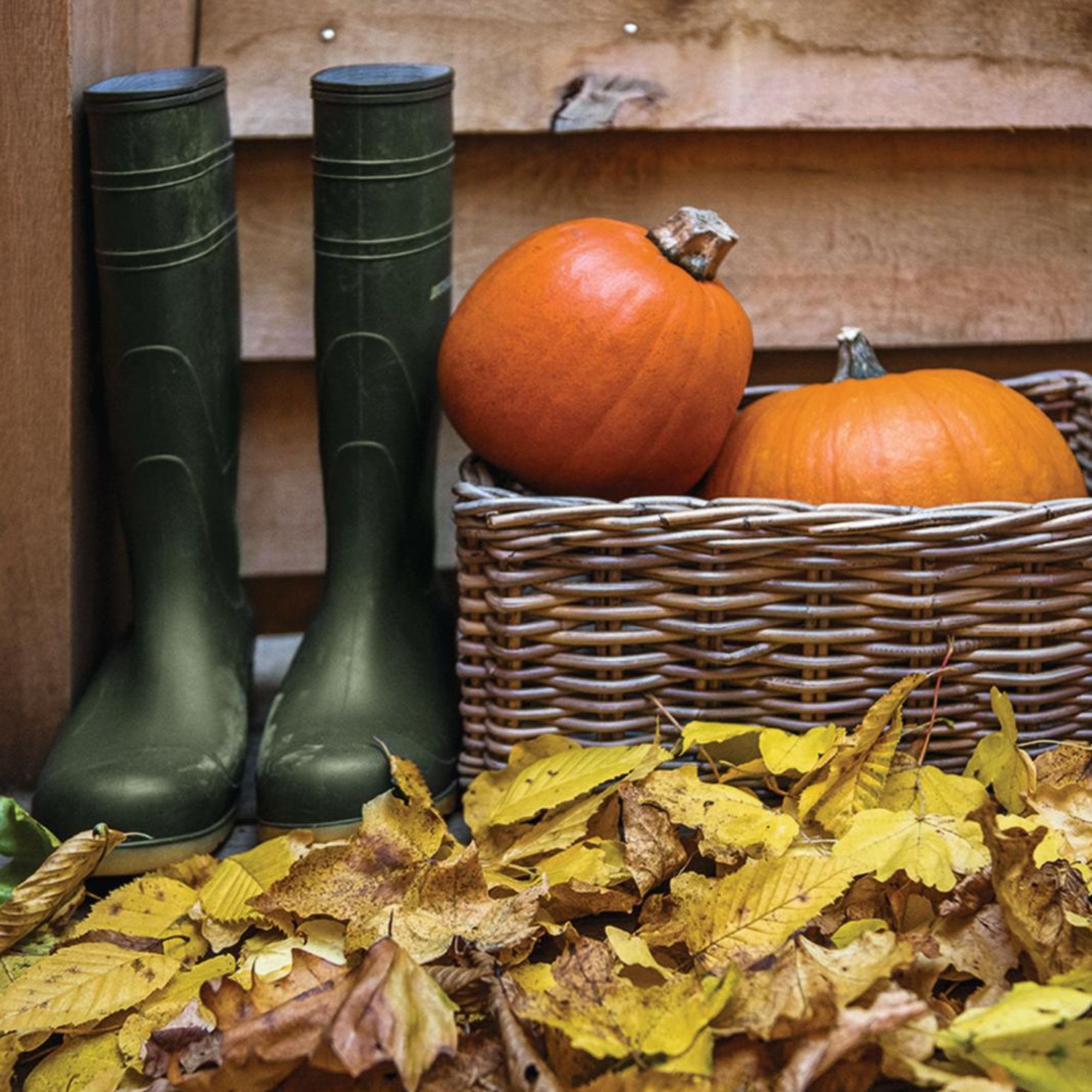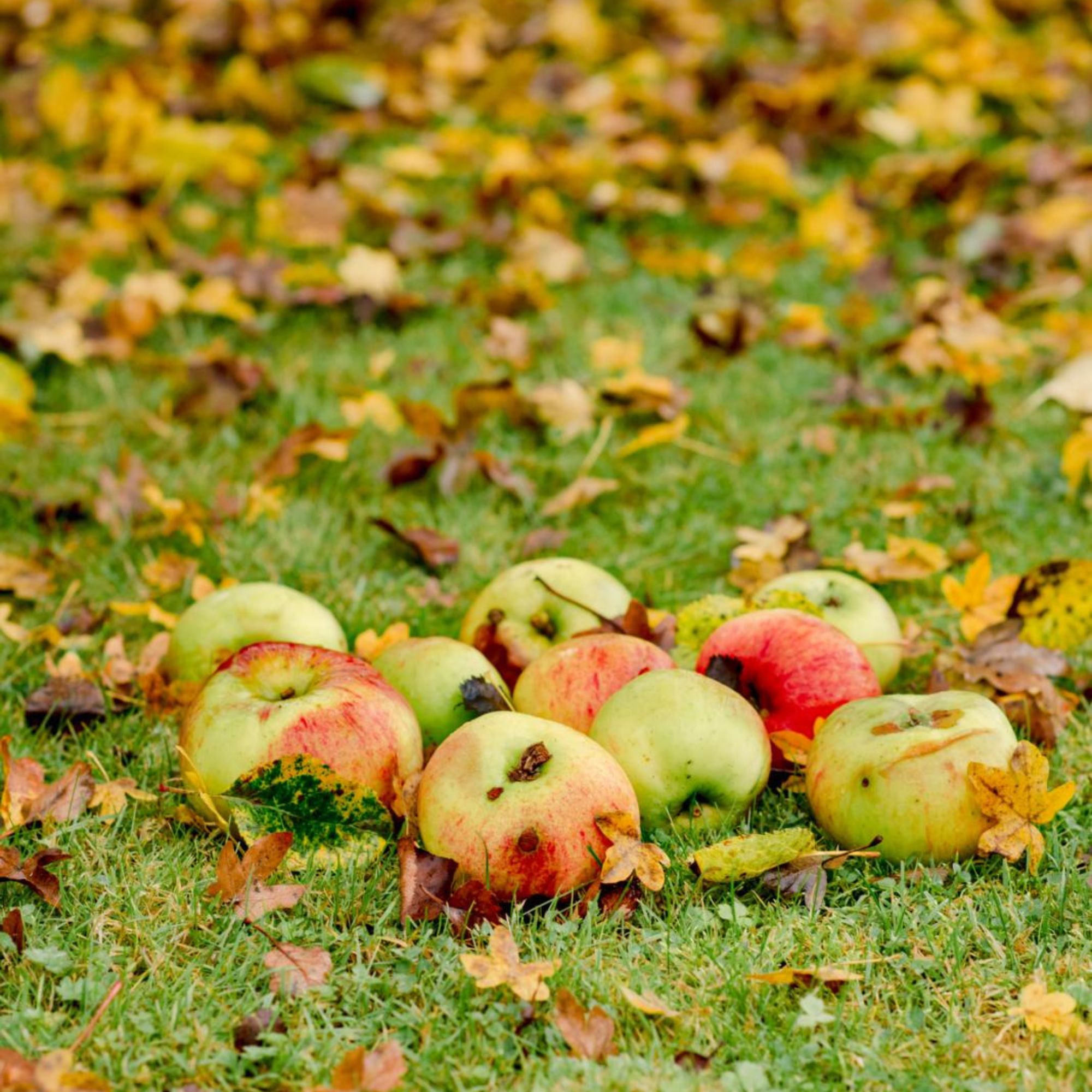Monty Don's autumn leaves hack will help your garden thrive (and it's free!)
Put all of those pesky autumn leaves to good use with Monty Don's clever gardening hack


It's official: Monty Don's autumn leaves hack is here to help you make the most of all of the (ahem) tree droppings strewn across your garden this October.
One of those genius garden trends we can absolutely get behind, our beloved Monty Don has taken a break from teaching us how to take cuttings, instead throwing all of his efforts into unveiling the potential behind every fallen leaf.
Because here's the thing: we might think that raking this debris up every autumn is seriously annoying, but it's actually a gift from Mother Nature to our gardens – if only we heed Monty's advice.
Monty Don's autumn leaves hack
Now, we know what you're thinking: you're already busy enough in your garden planting up your winter flowers, sussing out the best vegetables to sow in October, and overwintering dahlias – and all before that important autumn date rolls around.
Still, it's absolutely worth paying attention to Monty's autumn leaves hack, as it's a clever (and free) way to help your garden thrive in the months ahead.

'Every fallen leaf is potential leafmould and leafmould,' writes Monty on his popular gardening blog, noting that, unlike compost, leafmould takes no turning, mixing or knowledge to make.
'It's garden gold,' he adds.
Sign up to our newsletter for style inspiration, real homes, project and garden advice and shopping know-how

Intrigued? It's actually incredibly simple to make this autumn leaves hack a reality! All you have to do is gather as many fallen leaves as possible, mow them to chop them up, and then stack them in a big open heap.
This will allow them, Monty says, to 'break down into a lovely rich, crumbly texture and become an essential component of our home-made potting compost'.
Christopher O'Donoghue, one of the co-directors at Gardens Revived, is also a big fan of making leafmould – not least of all because this autumn leaves hack is a seriously eco-friendly way to enrich your soil.

A gardener with over a decade of experience under his belt, Christopher set up Gardens Revived with his brother, Andrew, in 2018 to create a thriving family business. Together, they have worked on residential gardens, listed buildings and gardens, flower shows and large estates with some exceeding 70 acres – many with historical significance.
While you can simply add your leafmould to compost, as Monty does, you can take the process a step further if you prefer.
Basically, Christopher advises you find 'a corner of your garden, a designated compost bin, or even a large bin bag (with holes punched in for aeration)' to get to work on your chopped-up autumn leaves.
'Start by creating a layer of leaves a few inches thick, making sure to sprinkle them with water to get them damp but not soaking wet,' he says.
'Remember, leaves are high in carbon and low in nitrogen, so it's a good idea to add a nitrogen-rich material like grass clippings or kitchen scraps to help speed up decomposition.'

To really ramp up the potential of this autumn leaves hack, Christopher suggests you 'periodically turn the pile or mix the leaves to aerate them'.
'If you're using a bin bag, just shake or flip them occasionally to make sure they get enough air,' he adds, urging green-fingered souls everywhere to add water as needed to aid in moisture levels – and to be patient, too.
'Let nature do its work,' he says, insisting it's important to wait for the leaves to fully decompose and transform into a dark, crumble material before you start using it as mulch or adding it to your garden soil.

Of course, if you want an even easier autumn leaves hack, Monty has come up trumps.
'I leave drifts and piles of leaves under hedges and trees to provide over-wintering cover for hedgehogs, frogs, small mammals and insects,' he says, giving us plenty of new wildlife garden ideas in the process.
Monty also leaves out stacks of logs and piles of prunings, 'all of which gives essential winter protection for these small creatures that contribute so much to the garden’s health'.
And just like that, we'll never look at all of the autumn leaves strewn across our lawns in quite the same way again...
What is leafmould?
Leafmould is 'an excellent soil conditioner made from decomposed autumn leaves,' explains Christopher. 'Using it improves water retention and aeration, all while adding valuable organic matter to your garden soil.'
Is leafmould better than compost?
Leafmould is very like compost, as it can be used to amend soil, except that it's much easier to make and only requires one ingredient: autumn leaves.
Of course, you can add green, nitrogen-rich material to your leafmould if you want to up the ante. However, you can absolutely stick to Monty's tried and tested method of leaving the leaves to decompose on their own.
Is leafmould harmful?
When made correctly, leafmould is garden gold, helping to enrich the soil and keep your backyard thriving. However, Christopher cautions against using the following leaves in your concoction:
Black walnut leaves: these contain a chemical called juglone, which can inhibit the growth of other plants.
Pine and spruce needles: these are high in lignin and can take a long time to decompose.
Holly leaves: not only are these tough and slow to decompose, but they also contain certain compounds that can make them less desirable for leafmould.
Poison ivy, poison oak, and poison sumac: these should be avoided entirely as they can cause skin irritation and allergic reactions.
Diseased or pest-infested leaves: always avoid these, as they may carry pathogens or pests that can be inadvertently introduced to your garden.
While oak leaves take a while to decompose, they are still more than suitable for leafmould.

Kayleigh Dray became Ideal Home’s Acting Content Editor in the spring of 2023, and is very excited to get to work. She joins the team after a decade-long career working as a journalist and editor across a number of leading lifestyle brands, both in-house and as a freelancer.